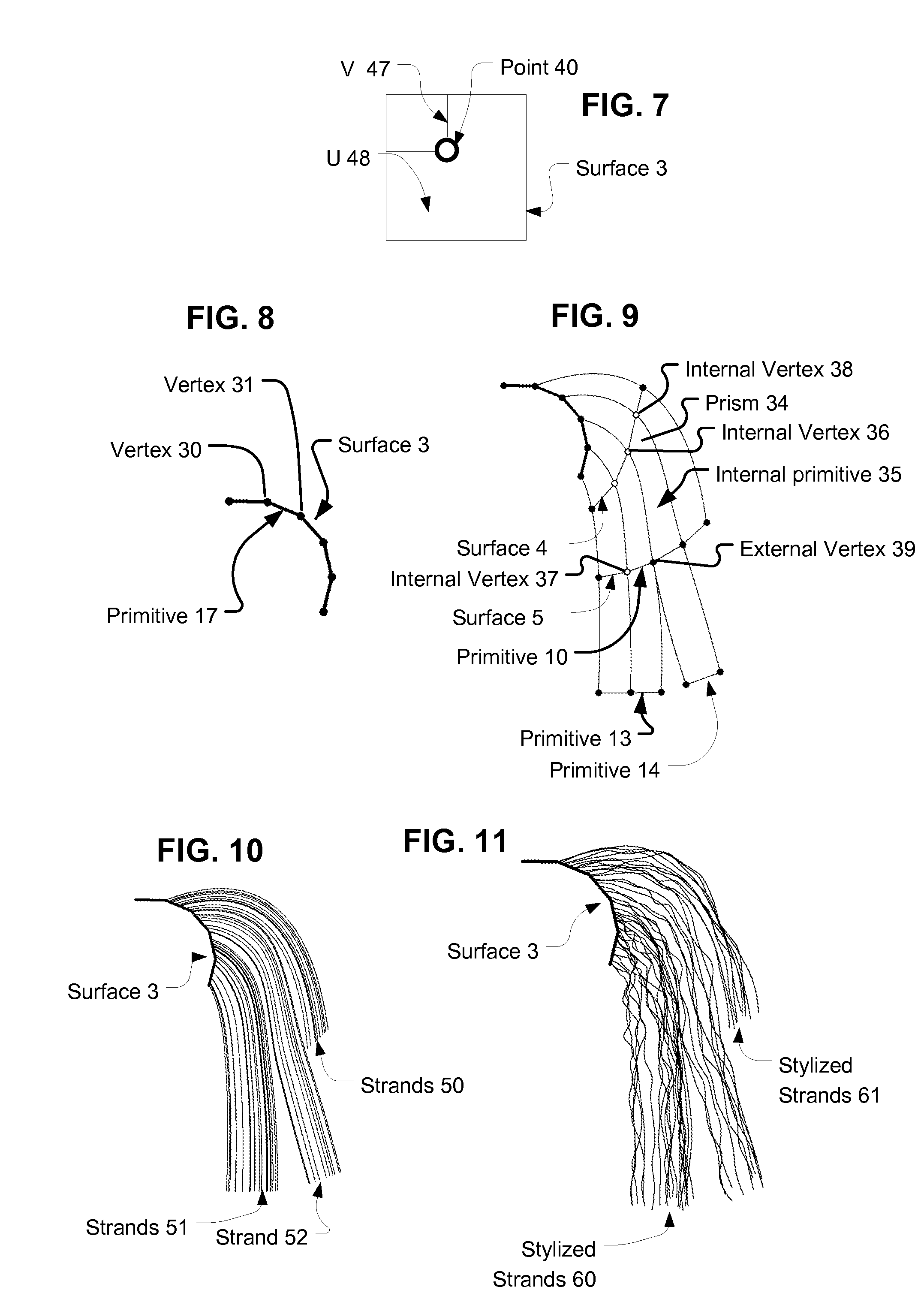Hair meshes
a hair mesh and hair technology, applied in the field of computer graphics, can solve the problems of difficult modeling, inability to model each and every hair strand individually in practice, and inability to complete the introduction of these techniques
- Summary
- Abstract
- Description
- Claims
- Application Information
AI Technical Summary
Problems solved by technology
Method used
Image
Examples
Embodiment Construction
[0032]It is to be understood that these disclosures are merely illustrative examples of aspects and embodiments to teach those of ordinary skill how to make and use implementations according to the claims. Reference herein to details of examples is not intended to limit the scope of the claims, nor is the absence of description, in any given context, concerning a detail an implication that its usage is precluded in such context.
[0033]The background described a variety of conventional approaches to modeling hair in computer graphics. The following description relates to a technique, that for ease of description, is called “hair meshes”. The nature of modeling hair using “hair meshes” may be better understood through a brief introductory example. Modeling hair through usage of hair meshes can be conducted by constructing a hair mesh. A hair mesh can be constructed from a collection surface primitives, which can be used to define a topology of the hair mesh. For example, the surface pr...
PUM
 Login to View More
Login to View More Abstract
Description
Claims
Application Information
 Login to View More
Login to View More - R&D Engineer
- R&D Manager
- IP Professional
- Industry Leading Data Capabilities
- Powerful AI technology
- Patent DNA Extraction
Browse by: Latest US Patents, China's latest patents, Technical Efficacy Thesaurus, Application Domain, Technology Topic, Popular Technical Reports.
© 2024 PatSnap. All rights reserved.Legal|Privacy policy|Modern Slavery Act Transparency Statement|Sitemap|About US| Contact US: help@patsnap.com










